Chateau de Chantilly – A 19th century castle with equestrian ties
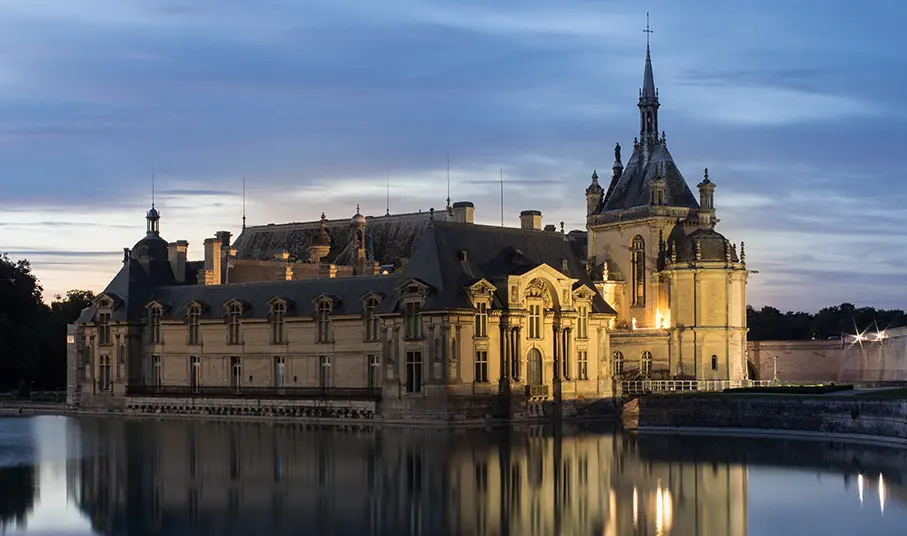
Among the long list of opulent castles in France, Château de Chantilly stands out. Situated 50km north of Paris, the chateau is a 19th-century architectural marvel and easily one of the most charming in France. While it may lack the grandiosity of some of its counterparts, its scenic surroundings with lush parks, gardens, a tranquil canal, large horse stables, and racecourse give it a unique appeal.
Originally constructed in the 16th century, it was destroyed during the French Revolution and rebuilt in the late 19th century. While it may not share the fame of the Palace of Versailles, it's usually listed as one of the most beautiful chateaus in France and has had its fair share of media appearances. It was featured in the 2022 Netflix movie The Gray Man as the Zbrka Castle.
Consisting of two primary structures, the Petit Chateau and the Grand Chateau, Château de Chantilly stands as a quintessential example of Renaissance architecture, a style that flourished between the late 16th and early 17th centuries. Crafted by architects Jean Bullant and Honore Daumet, the chateau's design seamlessly blends Renaissance and neoclassical elements, boasting intricate facades, soaring towers, and lavish interiors.
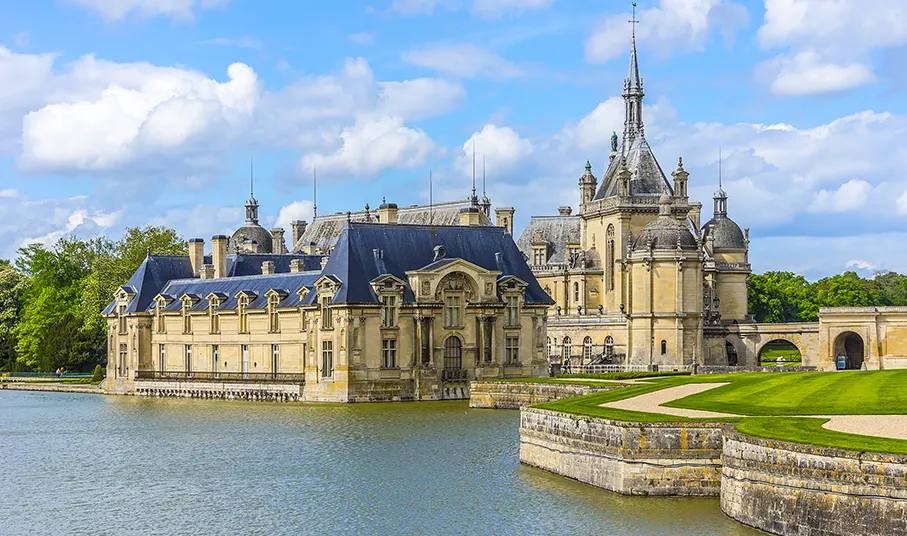
Before stepping into the chateau, you'll be struck by its enchanting grounds with creative gardens designed by some of the best landscape architects in the history of France. The grounds include the following gardens:
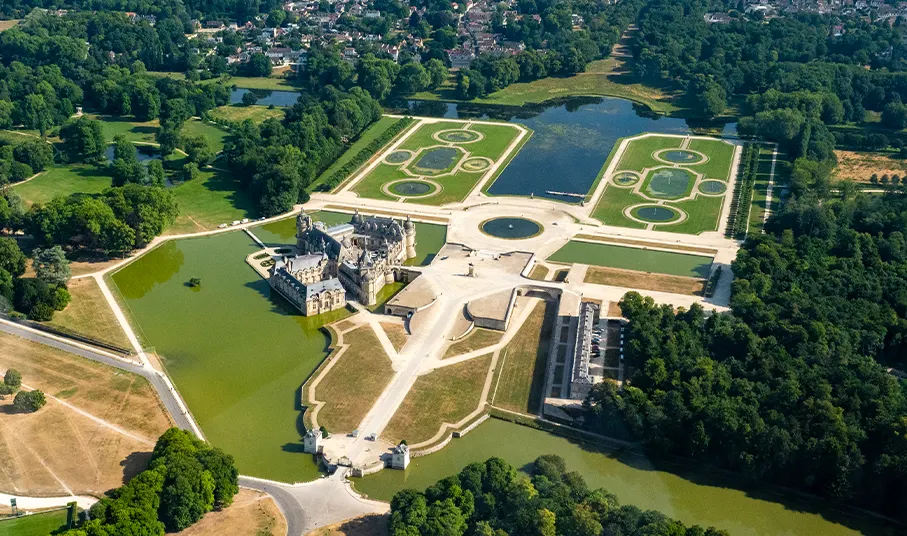
Designed by legendary landscape architect Andre Le Notre in the late 17th century for Louis II de Bourbon, the Prince of Condé, the garden is the most impressive part of the grounds. Split in two by the 2.5km Grand Canal, each section has a uniform look with lawns including intricate geometric shapes along with ponds surrounded by grass accessible via paths around their perimeters. Statues, fountains, and parterres are strategically placed to accentuate the elegance of the garden and seal its artistic mastery.
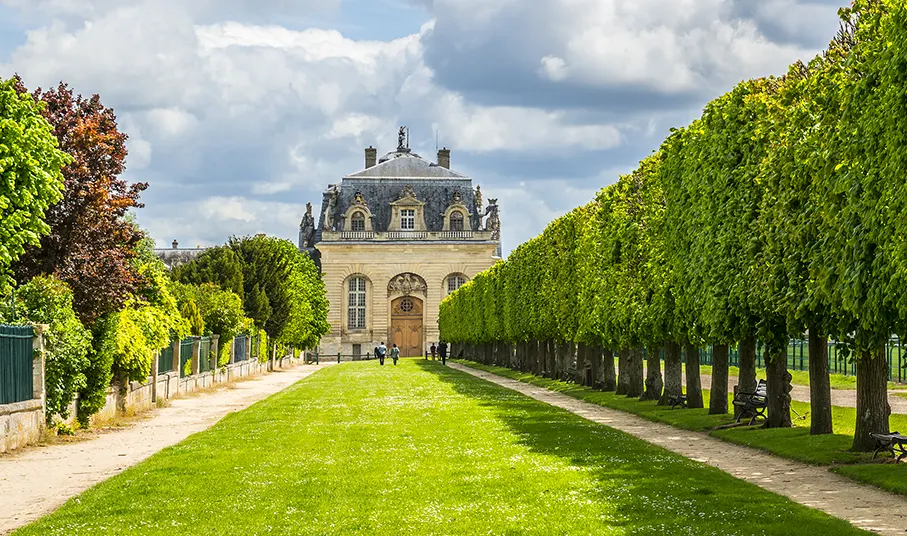
The Anglo-Chinese Garden was designed in 1773 by architect Jean-François Leroy for Prince Louis-Joseph de Bourbon-Condé. The garden has five rustic houses, Hameau de Chantilly, a folly with lavish interiors. It was popular back then as a resting place after hunting and long walks. Today, it has a restaurant that serves tasty desserts made from Chantilly whipped cream.
The English garden is between the chateau and the stables. Designed in the 19th century by Architect Victor Dubois, the garden was added as part of the castle's restoration. Along with its green scenery, the garden has a Greco-Roman structure called the Temple of Venus, a large waterfall designed by Le Notre, and the famous Island of Love, housing a statue of Eros, the god of love.
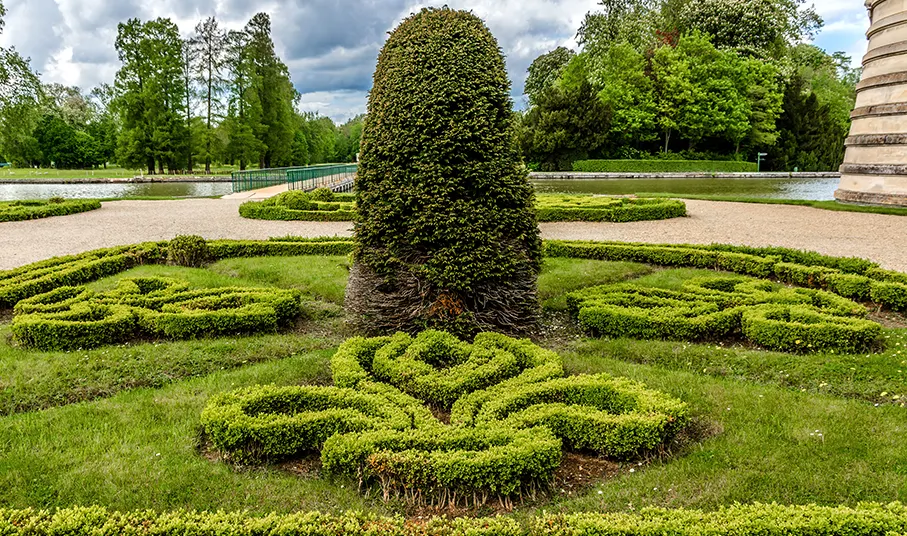
Château de Chantilly dates back to the 15th century with the Montmorency family, one of the oldest and most distinguished families in French history. The first construction at the site was a mansion built for Anne de Montmorency between 1528 and 1531.
Louis II de Bourbon (Le Grand Condé) inherited the Chateau from his mother, Charlotte Marguerite de Montmorency in 1632 after the death of Henri II de Montmorency. The castle quickly became a symbol of Condé's wealth and influence, as illustrated by the onsite museum.
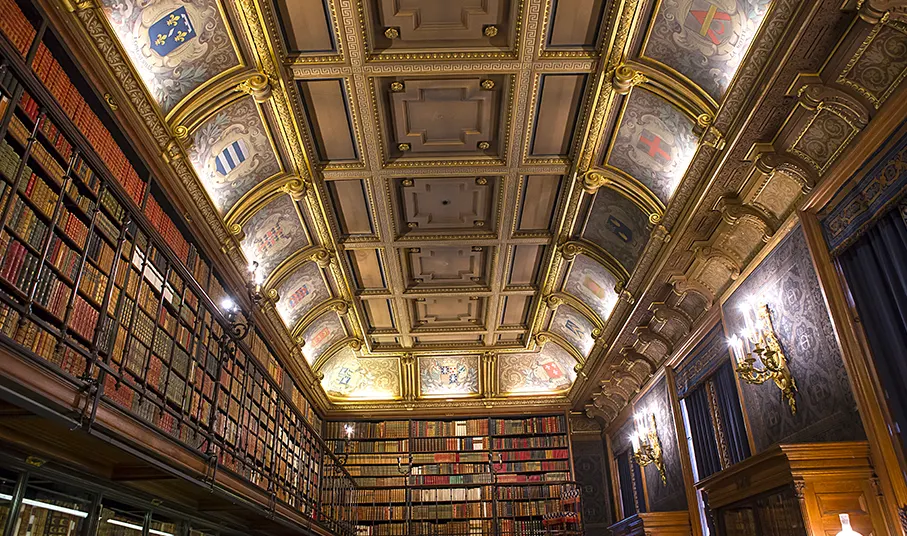
Ownership of the castle was transferred to Henri d'Orléans, the Duke of Aumale by Louis VI Henri De Bourbon-Condé (1756-1830), who had no heir after the execution of his son, the Duke of Enghien in 1804 by Napoléon.
The Chateau is currently owned by the Institut de France.
Within the walls of Château de Chantilly lies Musée Condé, which is easily one of the highlights of the visit, especially for art enthusiasts. Renowned for housing the most extensive private French art collection and the second-largest collection of antique paintings after the Louvre, the museum offers a captivating journey through European art history, meticulously curated by Henri d'Orleans, the Duke of Aumale.
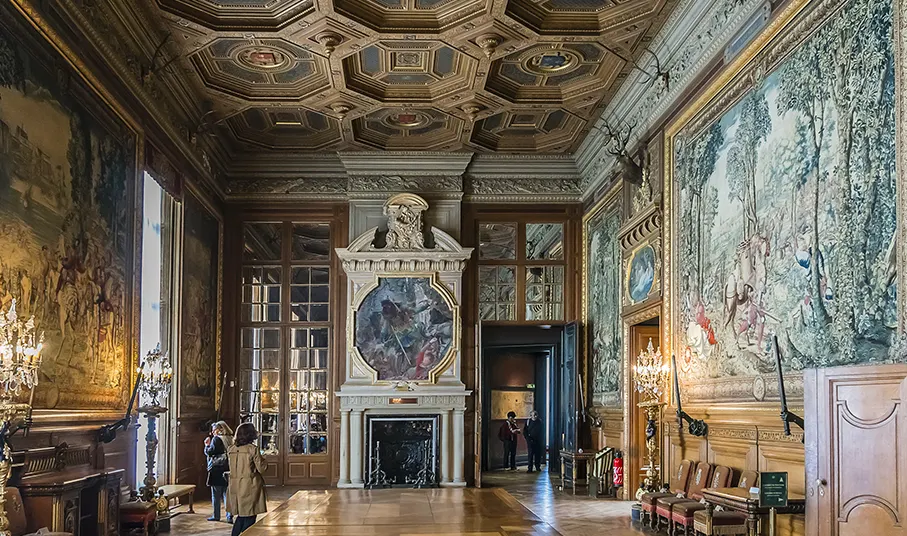
With a vast collection boasting over 2,500 paintings, the museum showcases some of the most iconic artworks in history. Masterpieces from renowned artists such as Raphael, Eugene Delacroix, and Jean-Auguste-Dominique Ingres grace its walls.
Notable pieces include The Madonna of Loreto and The Three Graces by Raphael, the portrait of Simonetta Vespucci by Piero di Cosimo, the Virgin of Mercy by Enguerrand Quarton, and the portraits of Le Grand Condé by Jacques Stella, Juste d'Egmont, and David Teniers.
Built between 1719 and 1735, the Great Stables is Europe's largest and best-looking stables. It currently houses an equestrian museum called The Living Museum of the Horse. The 15-room museum celebrates art and ethnology and highlights the bond between men and horses in different eras.
Hippodrome de Chantilly racecourse is one of the highest regarded venues in French horse racing. Founded in 1834, the course borders the Great Stables. Eagle-eyed movie buffs will notice that the Grand Stables and the chateau were prominently featured in the 1985 Bond movie A View to a Kill.
Overlooking the 2500-meter course, the grandstand, crafted by architect Honoré Daumet during the Chateau's reconstruction in 1879, offers impressive views. Each year, during the first week of June, the racecourse hosts the Prix du Jockey Club, the third of France's five Classic Races and a tradition dating back to 1836. The race course also hosts the Prix de Diane Longines, another prestigious annual horse race established in 1843.
Away from all the Paris noise, Château de Chantilly offers visitors a truly liberating escape with its rich history, magnificent architecture, and breathtaking grounds.
For total immersion in your Château de Chantilly experience, you'll want to spend the night at the Auberge du Jeu de Paume luxury hotel. Located just 850m from the Chateau and across the street from Grandes Écuries, the hotel offers perfect views of the chateau and its gardens and copies the castle's interior aesthetic. In addition to excellent accommodation, you can also enjoy fine dining at the in-house restaurant La Table du Connétable.
Just 50 km from Paris, you can easily get a chauffeured ride from your hotel in Paris, but if you want to be adventurous, here are the other options:
By road: Take motorways A3 and/or A1, exit "Chantilly" or follow D316 and D317 roads
By mainline train: Approximately 25 minutes from Paris Gare du Nord
By Réseau Express Régional (RER) train: Approximately 45 minutes from Chatelet-les-Halles station, line D.